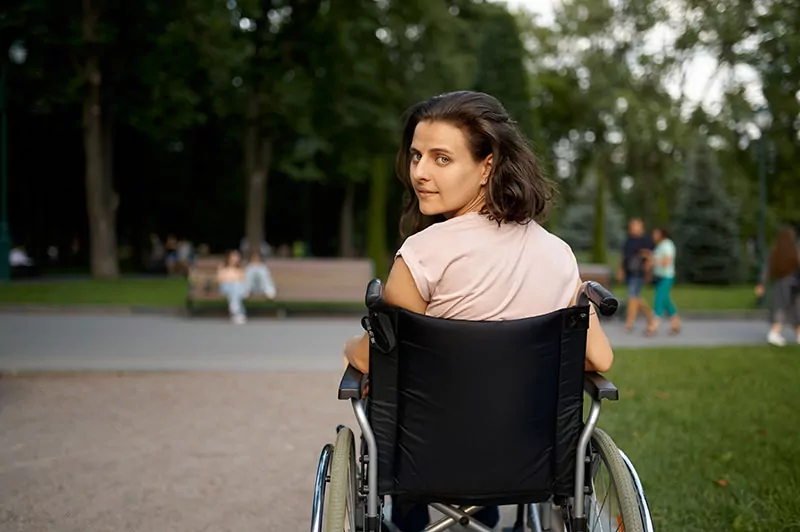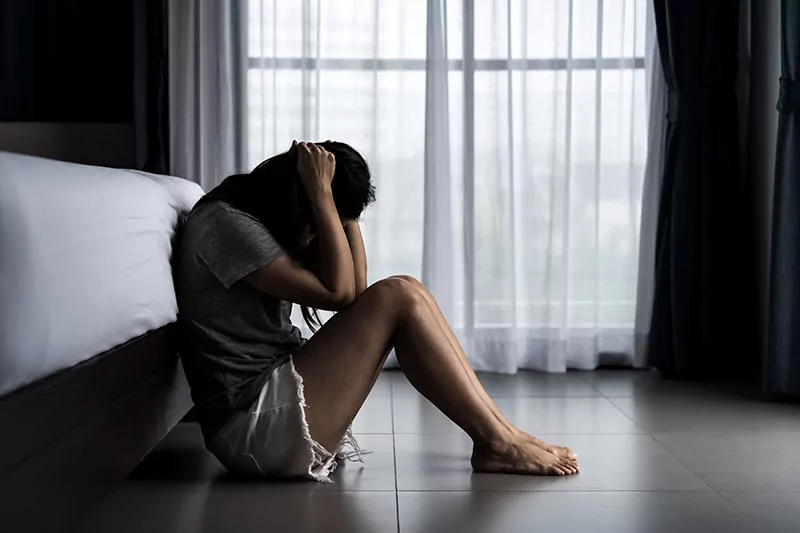Who Dies First After SHTF – 6 Groups
1

Let’s have a difficult conversation. It’s about who dies first after SHTF. It’s a difficult conversation because you—or someone you love—might fall into one of the 6 groups of people I’m going to describe. The 5th group might offend some of you.
This isn’t something that’s exactly fun to talk about, but it’s a reality. A LOT of people will die in a large-scale collapse or prolonged crisis. There’s just no way around that. It won’t be pretty. This isn’t hard to imagine. Take a coordinated EMP attack, for example, an attack that simultaneously targets the East and West coasts of the United States.
The most immediate, most noticeable impact would be the loss of electrical power across vast areas. Within minutes, entire cities would plunge into darkness. Communication networks would fail, disrupting emergency services, causing widespread panic and confusion. The initial hours would be marked by a frantic struggle to understand the situation, with people seeking information and assistance.
As days without power turn into weeks, the situation would worsen dramatically. Grocery stores would empty almost immediately. Critical infrastructure, including water treatment facilities, hospitals, and transportation systems, would stop functioning. The lack of refrigeration would lead to food spoilage, worsening food shortages. Generators would provide some with temporary relief, but fuel shortages would soon render them useless.
Societal order would start to fray. Law enforcement and emergency services, overwhelmed and under-resourced, would struggle to maintain control. Looting and violence would increase as desperation sets in.
By the time weeks turn into months, the grim reality of a prolonged power outage would become evident. With supply chains disrupted, food and water scarcity would lead to widespread malnutrition and dehydration, increasing susceptibility to diseases. The absence of clean water would result in outbreaks of waterborne illnesses.
The psychological impact of prolonged power loss and societal breakdown would be profound. Isolation, heightened stress, and anxiety would take a toll on mental health. Communities would fragment, trust would erode, and survival instincts would override societal norms.
Amid the chaos, the death toll would rise—dramatically—not just from direct causes like illness and violence but also from the inability to access basic necessities. Certain populations would be disproportionately affected. These are the groups we’re going to discuss.
The funny thing is, while most of us understand how this would be a reality, somehow we imagine we’d always be the exception, that we—and the people we care about—would all survive. If you watched my video on 5 harsh realities of life after SHTF, you know that most people suffer from optimism bias. That’s a problem.
Truth is, as preppers, we have a reason to be more optimistic than the rest of the population. At least we’re aware of the dangers, and actively taking steps to prepare for them, but nevertheless many people, and many preppers, will die.
But who dies first?
Here is my list, in order of who I think goes first.
1 – The Physically Weak


The first group to suffer losses would be the physically weak. This is a diverse group whose commonality lies in their dependence on a finely balanced network of care and technology, which can be easily disrupted in times of crisis.
First, consider the elderly. Many seniors rely on routine medical care and prescription medications to manage conditions like hypertension or diabetes. A breakdown in healthcare systems can cut off their access to life-sustaining drugs such as insulin, leaving them particularly vulnerable, and by “vulnerable” I mean dead.
Then there are those with mobility issues, whether due to disability, injury, or illness. For these individuals, the mere act of evacuating can be perilous. A wheelchair-bound person, for instance, might find themselves trapped if their only escape route is a stairwell blocked by debris or the driver isn’t coming with the wheelchair van.
Children, especially infants and toddlers, are inherently vulnerable. They require constant care, nourishment, and in many cases, specialized medication. Their survival is heavily dependent on the preparedness and resilience of their guardians.
People with chronic conditions, such as those requiring dialysis, face a dire predicament when the electrical grid fails. Dialysis machines are life-preserving but are also among the first to become non-operational without power.
Consider, too, individuals who depend on a steady supply of oxygen. These patients can find themselves in immediate distress when their oxygen concentrators stop working due to power outages.
And let’s not forget those with severe allergies or conditions like epilepsy, who need immediate access to emergency medications like EpiPens or anti-seizure drugs to prevent life-threatening episodes. Stock up on antibiotics to reduce the odds you might perish.
History
Beyond common sense, there are plenty of historical examples where this has proven true.
The aftermath of Hurricane Katrina in 2005 is an example, where the frail and bedridden were left stranded in hospitals and nursing homes without power, water, or lifesaving medical interventions. They were, in some cases, just abandoned. Diabetics went without insulin, and those on ventilators faced life-threatening situations as generators failed.
The 2010 Haiti earthquake unveiled another layer of harsh truth. Amidst the rubble, individuals with physical disabilities were often left behind during the frantic initial evacuation efforts. Those with visual and hearing impairments were unable to receive lifesaving warnings and instructions.
In the Great East Japan earthquake of 2011, the elderly faced insurmountable odds. In one town, where nearly one-third of the population was over 65, the inability to swiftly evacuate due to physical frailty led to a significant number of casualties.
The European heatwave in 2003 further illustrates the vulnerability of the physically weak during natural disasters. Around 30,000 people died during that heat wave, almost half of those in France alone.
Many of the elderly succumbed to the sweltering heat, particularly in France, where a lack of air conditioning in homes played a role. The isolation of the elderly, compounded by the August holiday season, meant that those who needed assistance were left without it.
These historical incidents underscore the essential need for preemptive planning and support for the physically weak.
These people die first.
What to Do
So what if you or some of your loved ones fall into this category? Many of you might have someone with a disability or chronic condition that you will want to care for. Maybe that’s you. Maybe you’re a silver prepper, meaning someone in their senior years.
You have challenges ahead, no question about that, but there are some steps you can take to improve the odds of survivability. You just have to think critically about your situation and build a support system and support network.
But there is no question, in a serious, prolonged crisis, the outlook isn’t great. People with mobility impairments should have access to manual mobility aids and practice evacuating with them. It’s also essential to have a network that knows your routine and safe spaces you can access quickly.
For those dependent on supplemental oxygen, keep a reserve of portable oxygen tanks and be familiar with manual resuscitation techniques. Also, ensure that you have battery backups or a generator for your oxygen concentrator.
The elderly should have a personal alert system to signal for help. They should also establish a ‘check-in’ protocol with family or neighbors during a disaster. For children, their care is going to rely on you, parents. Government programs and social service systems won’t help you.
2 – Leaders


Now if history serves as any example, and often it does, political and business will leaders undoubtedly find themselves in a precarious position after SHTF. Depending on the crisis at hand, many of the leaders might die next.
They have the power in stable times, but they may quickly become targets when stability crumbles. Their decisions, alliances, and actions are scrutinized and often met with heightened emotions from the people. In the wake of a catastrophe, these leaders face the dual challenge of managing the crisis and often becoming the focal point of public dissatisfaction or outrage.
History
Times of crisis have precipitated some of the most dramatic shifts in political and business landscapes, often with violent outcomes for leaders. The assassination of Julius Caesar in 44 BC, an event that occurred amidst political chaos, is one of the earliest examples of how quickly leadership can be extinguished when discontent brews.
Fast forward to the 20th century, the assassination of Archduke Franz Ferdinand in 1914 triggered a chain of events leading to World War I, illustrating the geopolitical fragility and the personal risks for political figures. Post-World War II saw the Nuremberg trials and the removal of leaders who were deemed responsible for the conflict and its atrocities.
More recently, the global financial crisis of 2008 resulted in the fall of Lehman Brothers and led to the vilification of CEOs considered responsible for the economic downturn. The Occupy Wall Street movement of 2011 was a direct response to this crisis, targeting economic inequality and the perceived greed of corporate leaders.
You’ve heard the saying, “Eat the rich.”
There are countless examples, really. Social upheaval leads to change in leadership, often by violent means. People are already upset with most elected officials today. Imagine their discontent in the face of a disaster that the government can’t handle—worse, that government and business corruption may have caused. Mob justice will be served on those in power.
What to Do
So what do you do if you’re a business leader, politician, or government official? Well, you’d better have a solid bug out location, that’s for sure. And maybe a second passport. Plan for security for you and your family. Create a plan to disappear.
3 – The Violent


The next class of people to face higher odds of dying would be those who resort to violence for survival. The violent.
In the chaotic aftermath of a disaster, when law enforcement is stretched thin and a power vacuum emerges, there’s a tendency for a certain segment of the population to turn to violence as a means of survival. This group may believe that by using force, they can secure resources, assert control, or even establish a new order.
We’ve all heard from these future aggressors before in prepping circles, am I right? They’re the ones who say, “I’ll just raid Wal-Mart after a collapse.” Or they say things like, “I only need to stock guns and ammo, then I can take whatever I want.”
While some may initially find success through intimidation or outright aggression, this approach is fraught with danger. It not only undermines the fabric of remaining social structures but also significantly increases the likelihood of a violent end for the perpetrators themselves.
The cycle of violence in post-disaster environments is often self-perpetuating. Individuals or groups that resort to violence invite retribution and escalate tensions, which can lead to more widespread conflict. In the absence of a functioning legal system, justice becomes swift and brutal, and the lifespan of those who live by violence is drastically reduced.
History
It’s not hard to see how the aggressors often end up dead. Live by the sword, die by the sword. After a collapse, you want to be in your safe zone, your defensive zone. If you’re heading out with the intent to cause violence, you’ll find violence. That may end in your favor… may. Do it long enough, and your luck will run out. Guaranteed.
For example, during the French Revolution, the initial wave of violence against the aristocracy soon spiraled into the Reign of Terror, where revolutionary leaders like Robespierre used violence to consolidate power. This strategy ultimately backfired, leading to Robespierre’s own execution.
The collapse of the Roman Republic is another case in point. As power became more centralized and contested among the likes of Julius Caesar, Pompey the Great, and others, Rome was engulfed in civil wars, resulting in a series of assassinations that claimed the lives of many, including the instigators themselves.
The Bosnian War after the breakup of Yugoslavia in the early 1990s also demonstrates the risks of resorting to violence in power vacuums. The initial aggressors often became targets in the ensuing ethnic conflicts.
What to Do
My only advice if you’re in the “I’ll just take what I need” group is to think again. You might have all the tactical gear, Kevlar vests, night vision, and high-capacity magazines in the world, but so do a lot of other people. You might shoot your way through the first few encounters, but—eventually—grandpa is gonna take you out with his lever action 30-30. Violence is not a survival plan. It’s a death plan.
4 – The Isolated


The next group to fall would be the isolated. Isolation can be as much a psychological barrier as it is a physical one. Isolation encompasses not only those in remote or rural areas but also individuals in bustling urban centers who lack a support network of family, friends, or community.
The lone wolf survivor is not going to fare well. Those without a network for family and friends will struggle. It takes a village.
This isolation can be detrimental in times of crisis, as the exchange of aid, information, and emotional support is crucial. Without these connections, the isolated are often the last to receive help and the most vulnerable to the compounded effects of a disaster.
History
History has shown that those who are isolated often fare worse in crises.
- During the 1918 Spanish Flu pandemic, rural communities with limited access to medical care and current information suffered higher mortality rates. Similarly, in urban settings, the elderly and infirm who lived alone faced more significant challenges without a support system to help them access treatment.
- The Great Blizzard of 1978 in the Northeastern United States left many people stranded in their homes, but the toll was heaviest on those living alone who could not reach out for help.
- The 1995 Chicago heat wave is another example, where most of the 700 victims were elderly individuals who lived alone and were socially isolated; they were less likely to have air conditioning or to seek help due to their isolation.
- 2011 Thailand Floods: As vast areas around Bangkok were inundated by floodwaters, those who lived alone or in remote communities were particularly affected. With relief efforts strained, these individuals had fewer means to call for help and were often overlooked in favor of more accessible, populated areas.
What to Do
For those at risk of isolation, being proactive is key to ensuring safety and well-being. The modern technology we use in our computers and smartphones gives us the illusion of being more connected, but it’s just that—an illusion.
People are less likely to know their neighbors today than in years past. People build friendships entirely online. That’s great, but when the grid goes down, those people aren’t around to help. You need people who are physically present.
5 – The Mentally Weak


Now, this next category, some of you might take offense to this. I call it the mentally weak.
The “mentally weak” are those who decide to just call it quits rather than face what will come. It’s an argument shared by many. Living your final days in a post-apocalyptic world. There doesn’t sound like there’s much joy in that, and I can’t explain why I would choose to hang on as long as I could. It could just be a natural survival instinct, but I tend to think it’s more of a morbid curiosity. I want to see it all unfold.
So, I’m not sure what to call it. Is “mentally weak” the right phrase? My thought has always been that these people would lack the mental fortitude to endure the end of the world as we know it. But maybe I’m wrong. Maybe they’re not mentally weak. Maybe they’re smart. Let me know what you think in the comments section if you think there’s a better phrase, or whether this group of people might have it right.
Either way, in the aftermath of a societal collapse, mental resilience becomes as critical as physical endurance. Those who find it challenging to cope with the extreme stress, anxiety, and the psychological toll that such catastrophic events can impose may just decide the best option is checking out.
This includes individuals who may experience overwhelming fear, depression, or hopelessness, potentially leading to paralyzing inaction or desperate decisions. The mental strain of enduring a long-term collapse can exacerbate existing mental health issues and equally impact those who have never struggled with mental health before.
History
The siege of Leningrad during World War II, which lasted over two years, is a prime example where the mental strain on the city’s inhabitants was as lethal as the famine and cold. The prolonged stress and trauma led to a breakdown in social order and instances of extreme desperation.
In the wake of the 1929 stock market crash, many who lost their fortunes, faced with what seemed insurmountable financial ruin, tragically chose to end their lives.
During the Rwandan Genocide, the psychological scars left on survivors have been deep and enduring. The mental resilience required to survive such an ordeal was immense, and many struggled with the long-term mental health consequences of such trauma.
However you think of this group, they’re not going to make it. They’ll either crack under the trauma and go insane, or they’ll just follow the thought process that it’s just not worth going on.
6 – The Unprepared


This last category describes both non-preppers and the people who are struggling to just get by. It’s the unprepared. In a severe crisis, the disparity between those with ample resources and those without becomes very evident. The lack of resources encompasses not just financial means but also access to essential supplies like food, water, and shelter.
Those without resources may include individuals living in poverty, the homeless, and even middle-class families living beyond their means with nothing to show for it. Even some of the well-off, frankly.
Granted, on the financial front, in a long-term SHTF, TEOTWAWKI-type situation, the dollar becomes as worthless as your 401k, but often, particularly in the early days of a crisis, those with financial resources can often find safety and security.
History
The vulnerability of those without resources in times of crisis is a recurring theme in history. During the 1930s, the Dust Bowl compounded the misery of the Great Depression, as impoverished farmers faced the loss of their lands and livelihoods, leading to widespread displacement known as the Dust Bowl migration.
In the prelude to World War II, the Jewish populations in Europe were increasingly marginalized and stripped of their resources. Those with the financial means—and foresight—managed to emigrate and avoid the horrors of the Holocaust, while many who lacked resources—or whose assets were seized—were left extremely vulnerable to the ensuing genocide.
The impact of Hurricane Katrina in 2005 also illustrates this divide. The wealthy managed to evacuate New Orleans promptly while many of the city’s poorest residents, without the means to leave, endured the worst of the storm’s aftermath, trapped in the Superdome without access to basic necessities.
It’s not just financial resources, though. It also includes supplies, know-how, and skills. After all, you could be a Silicon Valley tech millionaire without the basics to make it through a 72-hour collapse, no knowledge of personal security or survival intuition, or real-life skills that include anything beyond computer code. If that’s you, you might be in trouble after SHTF.
What to Do
Now if you’re not one of the tech billionaires buying up land in New Zealand with your own airstrip for a personal survival retreat, you still have plenty of options. For those with limited resources, preparedness can seem daunting. However, even minimal steps can make a significant difference.
You’re watching this video after all. You’ve subscribed to my channel and all. Right?
You’re stocking water, food, and equipment to survive. In many cases, just surviving the first or second phase of a crisis will dramatically increase the odds you’ll survive the entire thing. No matter how bad things get, eventually systems re-emerge.
People will come together in some fashion. Economies and trade will happen again. Resources will come back. If you can build up the resources—and skills and knowhow—to get through the initial collapse, you’ll be well-positioned to keep on keeping on.
You need to do more than just stock rice and beans, though that’s a great start. Learn basic survival skills such as finding and purifying water, sourcing or growing food, and first aid. And build up an inventory of essential supplies like food reserves, medical kits, and tools.
Remember the golden rule in prepping. Two is one and one is none. Create systems of redundancy. Keep educating yourself. Keep prepping. It’s a marathon not a sprint.
Hope for the best. Prepare for the worst.
Read the full article here






